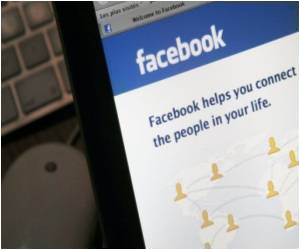Social media posts and tweets may be just what the doctor ordered when it comes to stopping illness.

"Infectious diseases are a serious problem and historically have been a major cause of death," said Faryad Sahneh, Kansas State University doctoral candidate in electrical engineering who is modeling the spread of epidemics in an effort to reduce them. "During the last decades there has been a huge advancement in medication and vaccination, which has helped save many peoples' lives. But now there also has been a revolution in communication and information technology that we think could be used to develop an even more robust preventative society against infectious diseases."
Sahneh is working on the project with Kansas State University researchers Caterina Scoglio, associate professor of electrical and computer engineering and expert in complex network modeling; Gary Brase, associate professor of psychology who studies how people make decisions; and Walter Schumm, professor of family studies and human services who studies family dynamics.
Collaborators also include Daniel J. Kruger, a public health scientist at the University of Michigan's School of Public Health; Fahmida N. Chowdhury, an expert in dynamical systems theory and control at the National Science Foundation; and Michael L. Parchman, director of the MacColl Center for Health Care Innovation.
According to Scoglio, having research collaborators from a wide range of relevant disciplines helps the team develop more comprehensive and accurate models that account for realistic human behavior.
Brase, for example, is collecting data by surveying college-age students about social media and what preventative measures they use against illness.
Advertisement
"However, we also saw that restricting contact with family and friends is something that people are not willing to do," Brase said. "If you think about how diseases are spread, one of the best things you can do is to not interact with other people. But we've seen that this is one thing that people are not very excited about doing."
Advertisement
One critical group is individuals such as teachers or public officials who regularly interact with a large number of the public, Scoglio said. If exposed to a disease, these individuals can potentially infect everyone they interact with throughout the day. Reaching that group, though, could help suppress the disease spreading.
"If 30 people in that group get a flu vaccine, they will have less probability of getting the flu," Sahneh said. "But, by being vaccinated, it's also benefiting all who come into contact with those 30 people because there is now a reduced chance of the flu being transmitted by those 30 individuals. So reaching that group is pretty important."
Researchers are also exploring who is the most effective or influential at distributing information through social media.
"One thing we're discussing is whether it would be better to receive recommendations or advice from someone people know and trust personally, like a friend or the university president, or from someone like the Centers for Disease Control and Prevention, which is an authority on the subject but has no personal connection to most people," Scoglio said. "It may be something where a best friend has more influence than a public health official."
The team's first study, "On the existence of a threshold for preventative behavioral responses to contain epidemic spreading," was recently published in the open-source Scientific Reports journal. Sahneh was the lead author. The study found that if individuals quickly adopt the appropriate preventative behavior, a growing infection can be contained. The study can be read at: http://bit.ly/Omv5Hc.
In December, Sahneh is presenting new findings on an optimal dissemination network of health information to the scientific community at the 51st IEEE Conference on Decision and Control. Results suggest that not only vaccinating critical individuals, but also facilitating the circulation of health information to and from those critical individuals greatly helps in suppressing infectious diseases.
Source-Eurekalert















